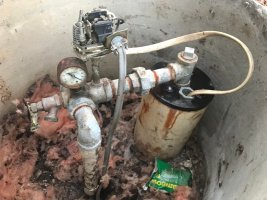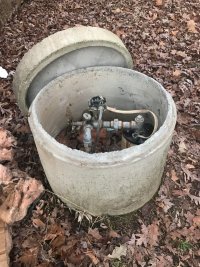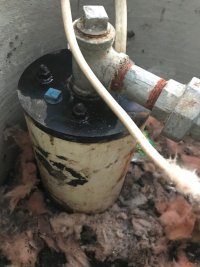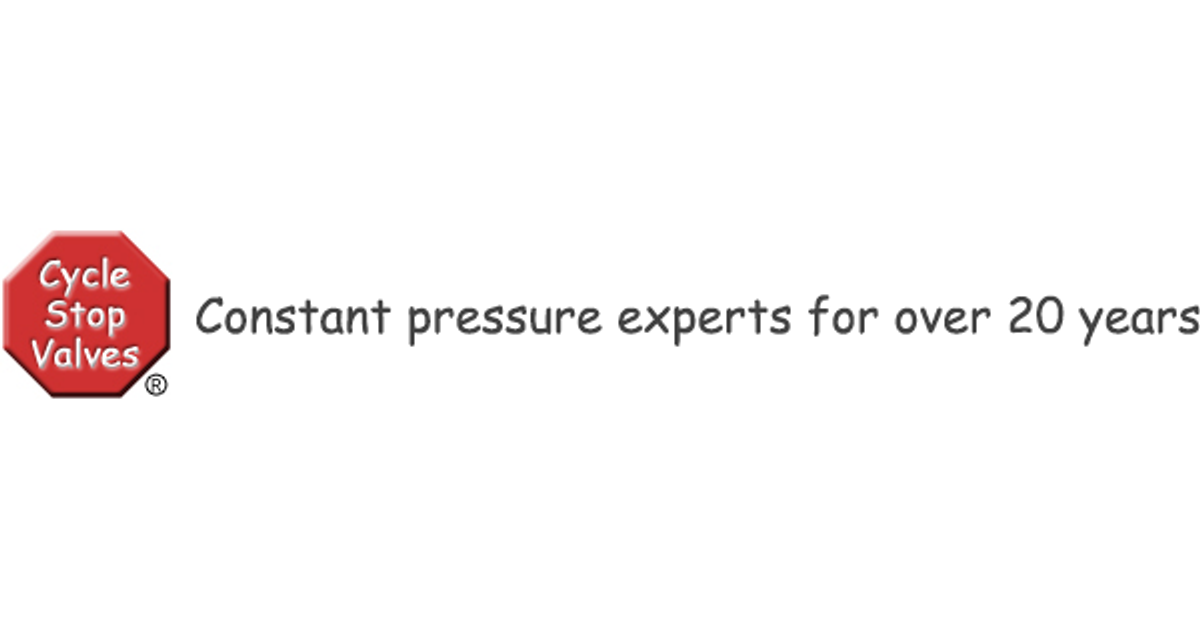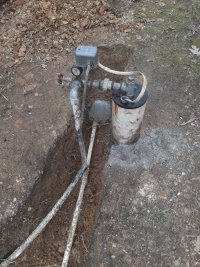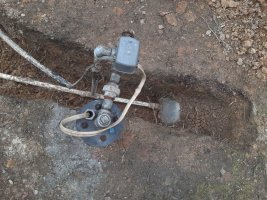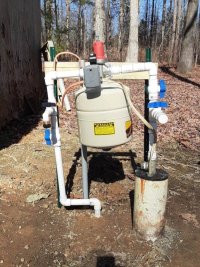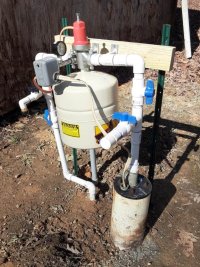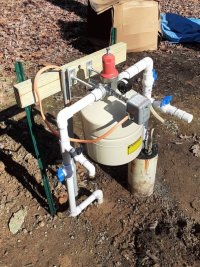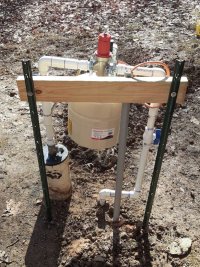Well pump short-cycling w/ no visible pressure tank.
Semi-experienced but not professional DIY-er here. Have done a lot of plumbing work over the years, many various repairs and renovations, but never any pump work.
Our well pump was installed about 18 years ago just before we purchased our property. I don't know anything about it-- manufacturer, capacity, etc-- except that it has performed flawlessly up until this last fall, when it started cycling on/off much quicker than it ever had before.
I'm finally digging into it and cannot find the most likely culprit for this symptom, a failing pressure tank. I know that buried tanks and in-casing tanks exist, but the local pros I've talked to say they've never actually seen any around here. They think this system has been running all these years without a pressure tank.
Is that really possible? Professional opinions appreciated... if there's a tank in here somewhere-- especially a buried one-- I don't know where to look for it. The whole idea of using a buried tank for this system also seems very stupid to me.
I'll be replacing the burnt up pressure switch this weekend just to rule it out. If there is no tank in this system, what else could be causing the short-cycling besides the pump itself? It only cycles on/off when a tap is running somewhere, never when the taps are closed, so I'm doubting an internal leak somewhere.
We are not really experiencing low water pressure. It just goes from normal to high over and over again.
Semi-experienced but not professional DIY-er here. Have done a lot of plumbing work over the years, many various repairs and renovations, but never any pump work.
Our well pump was installed about 18 years ago just before we purchased our property. I don't know anything about it-- manufacturer, capacity, etc-- except that it has performed flawlessly up until this last fall, when it started cycling on/off much quicker than it ever had before.
I'm finally digging into it and cannot find the most likely culprit for this symptom, a failing pressure tank. I know that buried tanks and in-casing tanks exist, but the local pros I've talked to say they've never actually seen any around here. They think this system has been running all these years without a pressure tank.
Is that really possible? Professional opinions appreciated... if there's a tank in here somewhere-- especially a buried one-- I don't know where to look for it. The whole idea of using a buried tank for this system also seems very stupid to me.
I'll be replacing the burnt up pressure switch this weekend just to rule it out. If there is no tank in this system, what else could be causing the short-cycling besides the pump itself? It only cycles on/off when a tap is running somewhere, never when the taps are closed, so I'm doubting an internal leak somewhere.
We are not really experiencing low water pressure. It just goes from normal to high over and over again.

